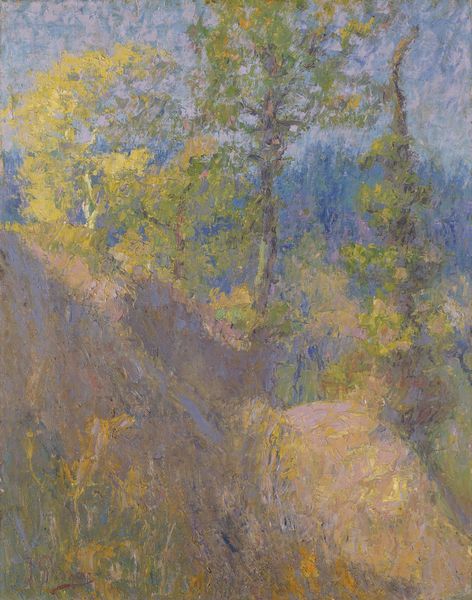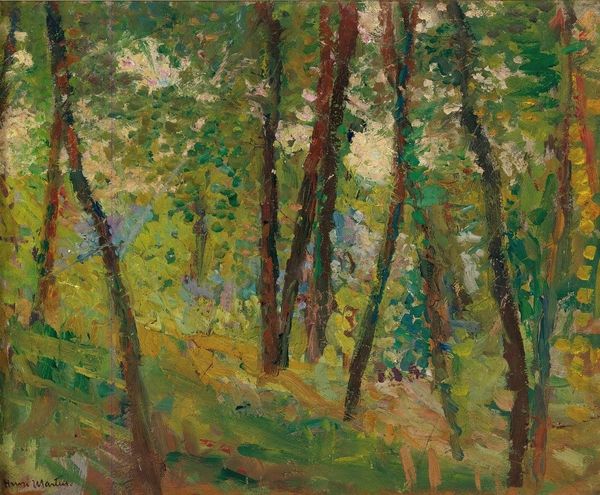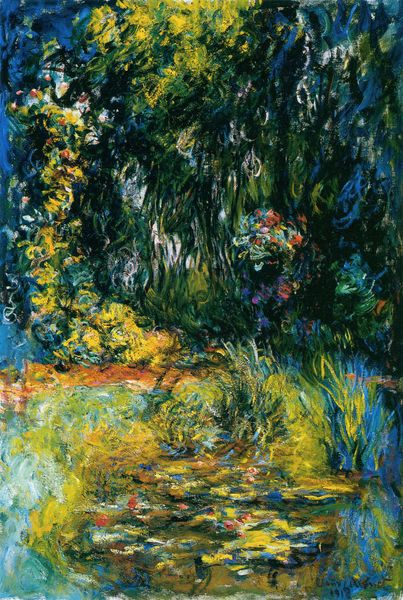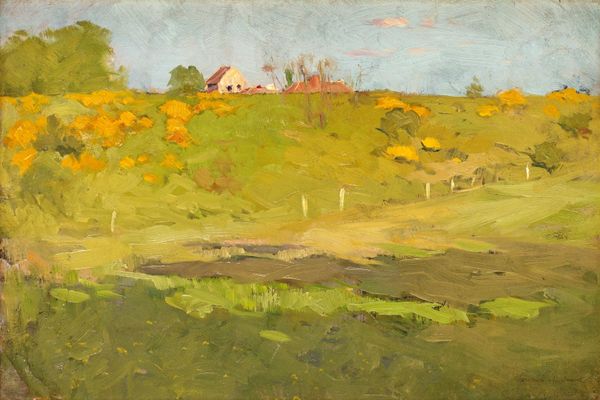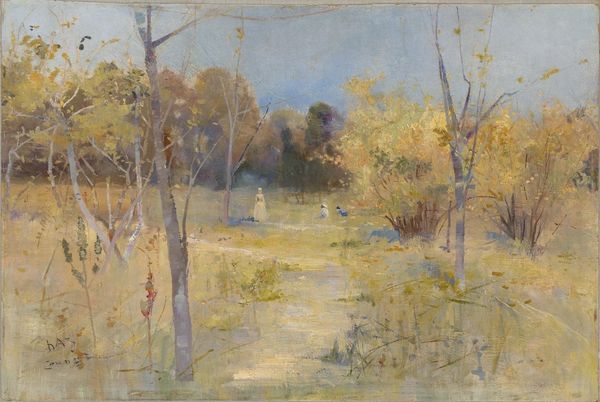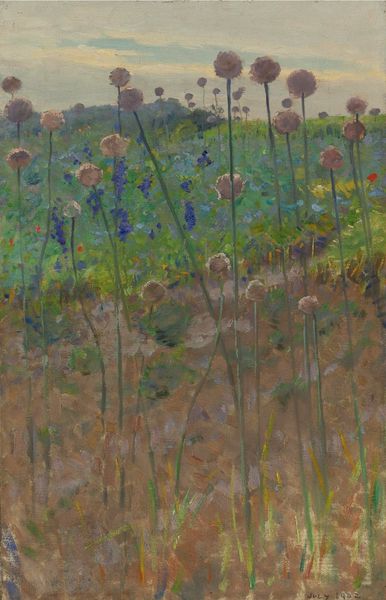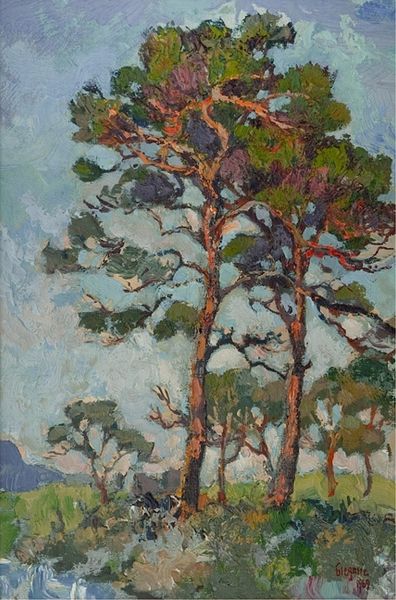
Dimensions: 61 x 55.9 cm
Copyright: Public domain
Curator: John Peter Russell’s “A Clearing in the Forest,” painted in 1891, captures a vivid plein-air scene rendered in oil paint. Editor: The painting gives off a dreamy aura; a field bathed in intense sunlight gives way to shadowed woods, all under a washed-out sky. It evokes a powerful sense of the isolation of nature. Curator: I am particularly struck by Russell's handling of light. The juxtaposition of the vibrant yellow clearing against the darker green forest reveals his keen understanding of color and value. Note how the composition directs your eye, from the bottom foreground through the clearing into the depth of the woods and toward a pale turquoise sky above. Editor: It’s tempting to locate Russell’s nature within Australia’s history of landscape art, which often depicted nature as a source of resource, as exploitable terrain, or else as "sublime," untamed frontier; the fact that Russell—an artist connected with the European avant-garde—took his easel out of doors in this region suggests a conscious attempt to create something in opposition to narratives of resource and conquest. Curator: Russell’s ties to Impressionism and Modernism are obvious; you see his focus not on photorealistic depiction but on the play of light and form. Editor: Yes, the emphasis on personal and momentary perception definitely marks a break from Romanticism's valorization of untamed Nature as transcendental signifier. He seems more aligned to the shifting cultural terrain marked by increasing industrialization and the growth of urban life. Curator: But let's not overstate the break; his palette retains an essential earthiness. The overall effect underscores the tension between observation and a stylized vision. Editor: Certainly, I concede that these visual tensions can be read as more ambivalent toward shifting representations of nature. Curator: Looking closely, Russell seems less interested in capturing "accurate" details and instead emphasizes the interaction of form and light, surface and depth, ultimately foregrounding painting itself. Editor: Indeed; so many contextual elements resonate within that interplay of light, color, and texture; there is the promise of an artist responding to Australia's landscapes while drawing from currents of modernity in European art history.
Comments
No comments
Be the first to comment and join the conversation on the ultimate creative platform.

